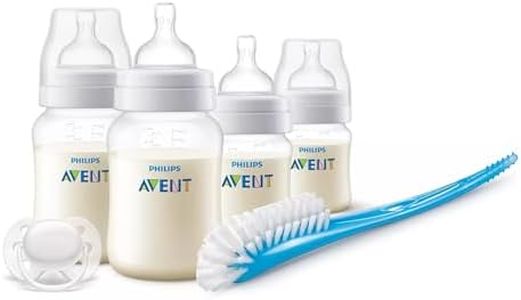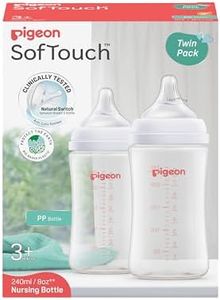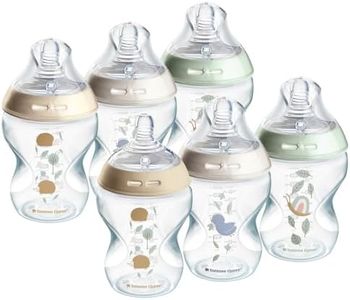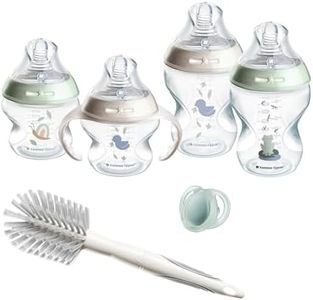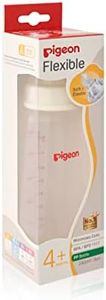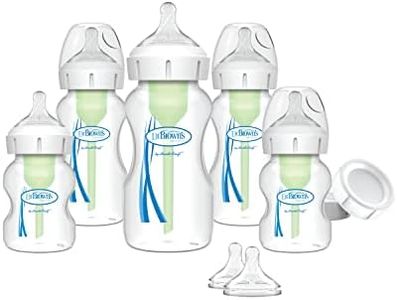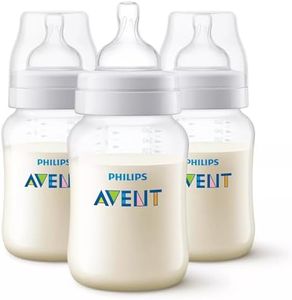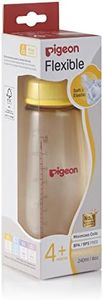We Use CookiesWe use cookies to enhance the security, performance,
functionality and for analytical and promotional activities. By continuing to browse this site you
are agreeing to our privacy policy
10 Best Bottles For Babies
From leading brands and best sellers available on the web.Buying Guide for the Best Bottles For Babies
Choosing the right baby bottle can make feeding time smoother and more comfortable for both you and your baby. There are many types and features to consider, each catering to different needs such as ease of cleaning, comfort for your baby, and feeding preferences. Understanding the main features will help you navigate the options and find the best fit for your baby's age, feeding style, and any specific needs like colic or easy transitioning between breast and bottle.MaterialThe material of a baby bottle refers to what the bottle itself is made from, such as plastic, glass, silicone, or stainless steel. This matters because different materials offer various benefits: plastic bottles are lightweight and hard to break, glass is durable and resistant to odors but heavier and breakable, silicone bottles are squeezable and soft, and stainless steel is strong and long-lasting. You can think about your lifestyle — for example, if you travel a lot, a lightweight or unbreakable bottle may suit you, while glass can be ideal if you prioritize cleanliness and durability for home use.
Nipple Shape and Flow RateThe nipple shape and flow rate describe the design of the bottle's teat and how quickly milk comes out. Some babies prefer a standard shape, while others find breast-like nipples easier, especially if you're switching between breastfeeding and bottle. Flow rate is important since newborns need a slow flow to avoid choking, while older babies can handle faster flow. It's best to start with a slow-flow nipple and observe how your baby feeds; you can adjust to a faster flow as they grow and their sucking becomes stronger.
Anti-Colic FeaturesAnti-colic bottles have special designs to reduce the amount of air swallowed during feeding, which can help lower chances of gas, spit-up, or fussiness. These bottles often use vents or special valves in the nipple or bottle itself. If your baby tends to be gassy or fussy after feeds, or if you want to prevent colic, bottles with these features are a good idea. However, they may have more parts to clean, so think about your willingness to assemble and wash them regularly.
Size and CapacityThe size or capacity of a baby bottle refers to how much liquid it holds, typically measured in ounces or milliliters. Small bottles (around 4 ounces) are suitable for newborns who eat less at a time, while larger bottles (8-9 ounces) are better for older babies who drink more per feed. Consider your baby's age and appetite, and remember that you might need smaller bottles at first and larger ones as your baby grows.
Ease of CleaningEase of cleaning is about how simple it is to wash the bottle and make sure it’s free of residue. Bottles with wide necks, fewer parts, and dishwasher-safe materials are generally easier to clean thoroughly and quickly. This is important because good cleaning prevents bacteria buildup and protects your baby's health. If you're looking to save time and avoid frustration, pay attention to bottle designs that are straightforward to disassemble and wash.
Compatibility with AccessoriesSome bottles are made to work with breast pumps, sippy caps, or handles, while others are not. This is helpful if you plan to pump and feed directly from the bottle or gradually transition your baby from bottle to cup using the same base. Think about your overall feeding goals and whether you'd benefit from a system where parts can interchange and make your routine simpler.
